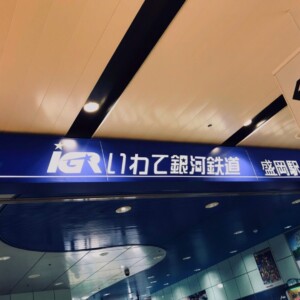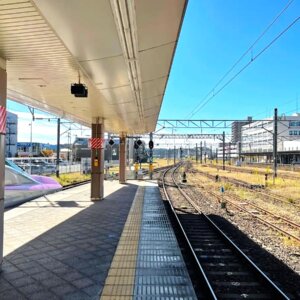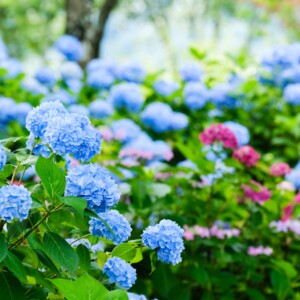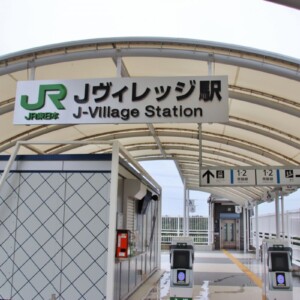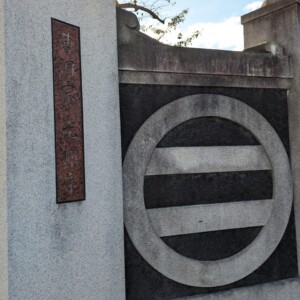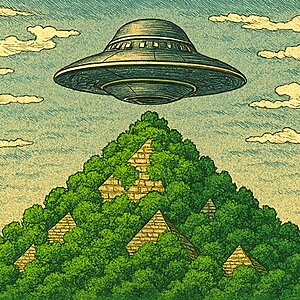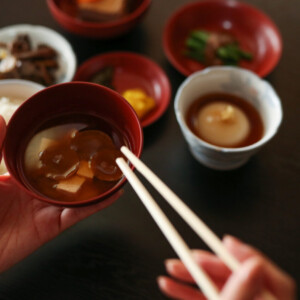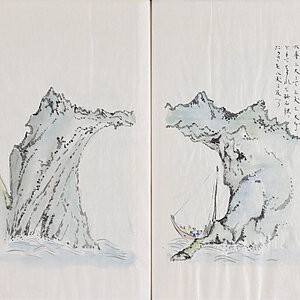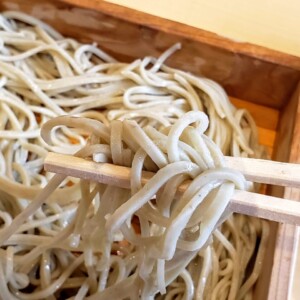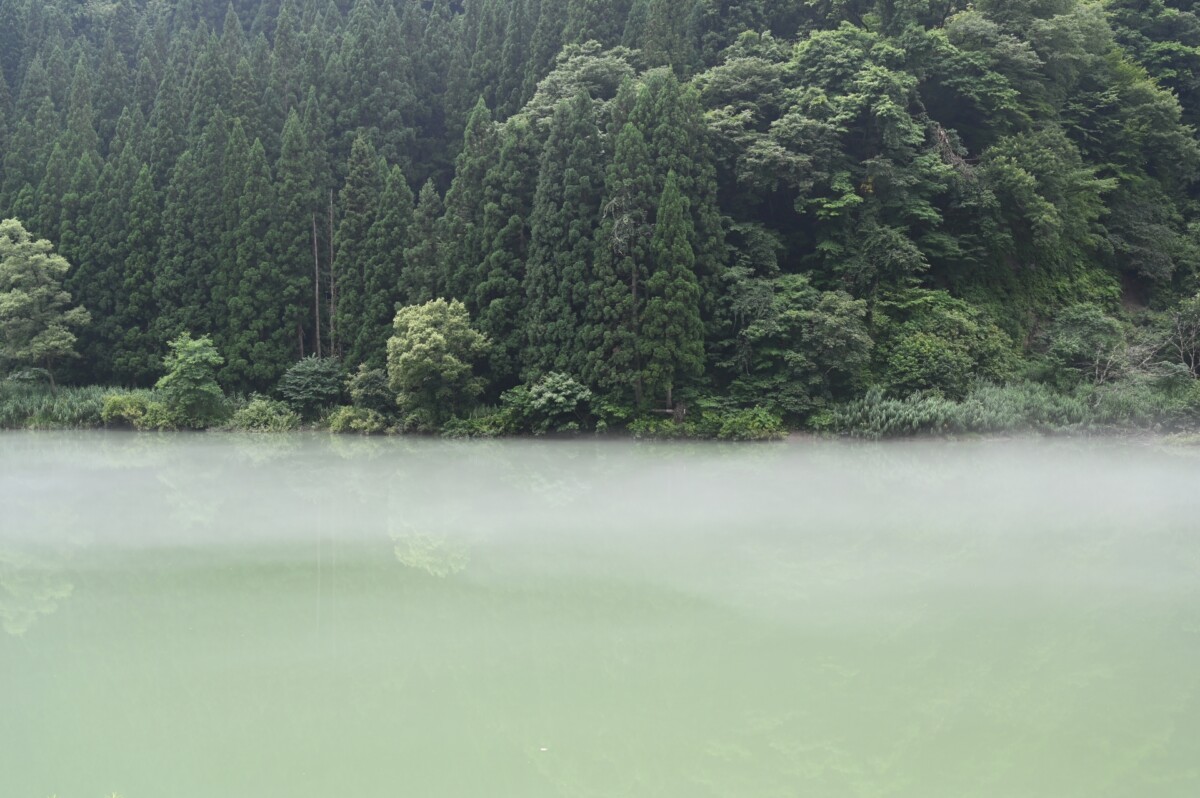
[Fukushima Prefecture] Abukuma River, which is close to people's lives | Tracing its history and scenery
table of contents
- 1 What kind of river is Abukuma River?
- 2 The word Abukuma - origin of the name and literary works -
- 3 Saigo Village, Nishishirakawa District, Fukushima Prefecture, where the source of the Abukuma River is located
- 4 Introducing the scenic spots of the Abukuma River, which flows leisurely through Nakadori, Fukushima Prefecture.
- 5 The constriction that passes the baton to Miyagi Prefecture
- 6 summary
This time, the first-class river "Abukumagawa" , we will introduce the magnificent scenery that spreads across the basin of Fukushima Prefecture.
The Abukuma River has appeared in the world of poetry since ancient times, and is a river that was used to water Amata's rice fields and transport goods. It has many scenic spots and has fascinated people since ancient times. Please take a look at the Abukuma River, which has continued to be a part of people's lives.
What kind of river is Abukuma River?
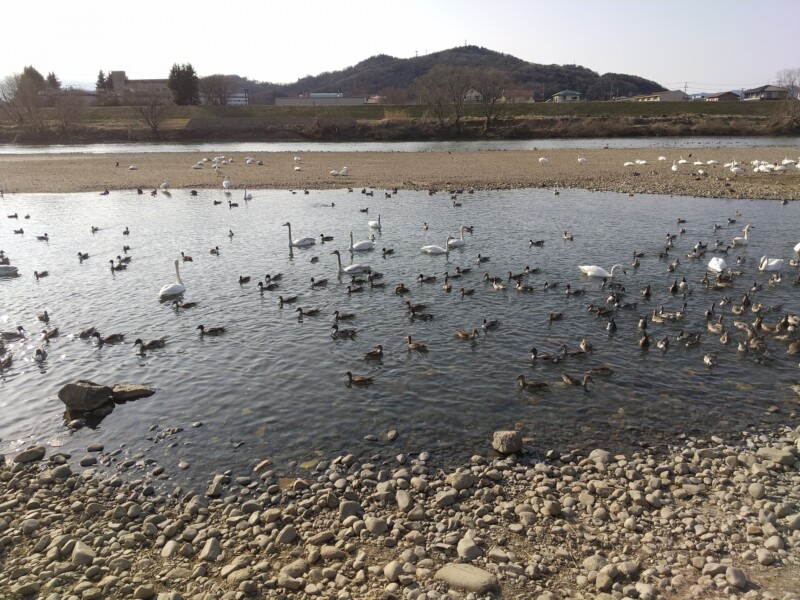
The Abukuma River is a first-class river that flows from Fukushima Prefecture to Miyagi Prefecture. The total length is 239km, making it the 6th longest in Japan. Its source is Saigo Village, Nishishirakawa District, Fukushima Prefecture, and flows from south to north through Nakadori, the central part of Fukushima Prefecture, merging with the Shakado River, Otakine River, Arakawa River, Surikami River, etc., and flows through the narrow part of the Abukuma Valley. After that, he passed the baton to Miyagi Prefecture. The banks of the Abukuma River, which flows between the steep terrain of the Ou Mountains and the gentle terrain of the Abukuma Mountains, carry a lot of rich soil rich with nature's blessings, and have grown rice and other crops. In areas where the flow is gentle, the Abukuma River has a history of being used for boat transportation to transport people and goods. Fukushima City is also famous as a visiting place for swans.
On the other hand, the Abukuma River has caused many large-scale floods due to its large flow of water. For this reason, people living along the banks of the Abukuma River have been working on flood control measures for a long time, and from the Showa era to the Heisei era, levees were built. However, nature sometimes shows off its amazing power. In recent memory, the Abukuma River overflowed in Sukagawa City, Koriyama City, Motomiya City, Fukushima City, and other areas due to the record heavy rains caused by Typhoon No. 19 in 2019, causing severe damage.
For people who have lived alongside the Abukuma River, the river has a history of being both a partner in life and an object of fear.
The word Abukuma - origin of the name and literary works -
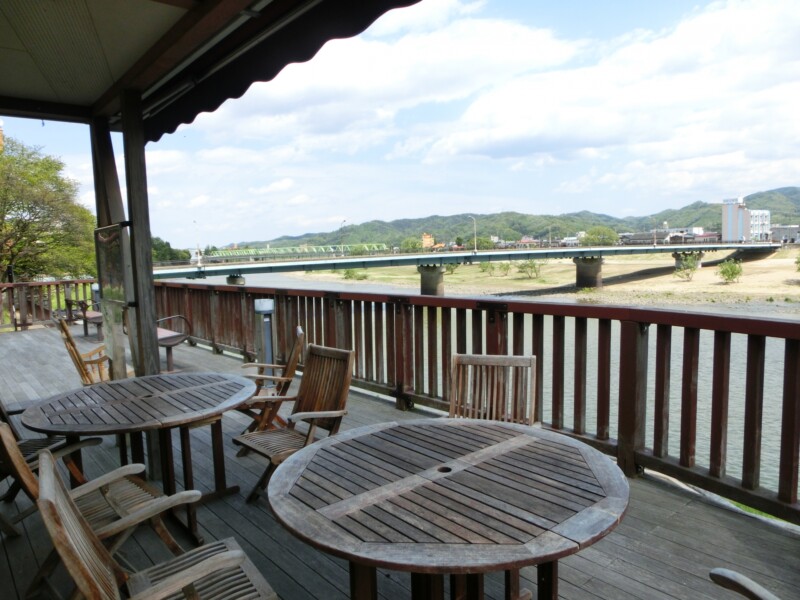
There are various theories about the origin of the name Abukuma. One theory is that this is because a large bear (Blue Bear) lived in the river basin, and another theory is that it is because the river flows in a ``large curve''. Another theory is that it was taken from the Ainu word meaning "to lie down comfortably."
Since ancient times, the Abukuma River has appeared in literary works under the terms ``Aikuma'' and ``Okuma.'' The Abukuma River is also used as a song pillow ``Even if the mist spreads across the encounter, there will be no end if we wait for you'', which is included in the Kokin Another reason for its popularity may be that if the name includes the word ``meet,'' it is easy to use as a word for ``meet,'' which is related to love between a man and a woman. ``Night on the Galactic Railroad,'' visited Fukushima City, composed a tanka that said, ``If you get separated from the flock for a while and come to the shore of Abukuma, the crickets will chirp.'' Masu. The Abukuma River has been used as a motif in various literary works throughout the ages.
Saigo Village, Nishishirakawa District, Fukushima Prefecture, where the source of the Abukuma River is located

Saigo Village is where the Abukuma River originates. The headwaters that flow from Mt. Nasu and Mt. Koshi gradually increase the speed of their journey as they descend down the Nasu mountain range. In the headwaters of Abukuma, there are many waterfalls such as Kirifuri Falls, known as the 88 Falls of Koshi, Akataki Falls, Tengu Falls, Otaki Falls, and Medaki Falls. Among them, Ontaki, which has a height of 40m, and Metaki, which has a height of 10m, are called phantom waterfalls because the road to the falls is steep and dangerous, and it is essential to be accompanied by a guide.
Koshi Ohashi Bridge carries National Route 289 connecting Saigo Village and Shimogo Village. The Abukuma River continues to flow into the valley about 60m below. Daikokuya is a lodging inn in Kashi Onsen, located on the banks of the Abukuma River, not far from Koshi Ohashi Bridge . It is a hot spring village that is said to have been loved by Sadanobu Matsudaira, the lord of Shirakawa. This is a secret hot spring where you can relax and enjoy the clear murmuring of the Abukuma River.
Information<Ryokan Daikokuya>
- Facility name: Motoyu Koshi Onsen Ryokan Daikokuya
- Location: 1, Mafune, Teradaira, Saigo Village, Nishishirakawa District, Fukushima Prefecture
- Phone number: 0248-36-2301
- Website: http://www.kashionsen.jp/index.html
Google Map
Introducing the scenic spots of the Abukuma River, which flows leisurely through Nakadori, Fukushima Prefecture.
The Abukuma River slowly moves north through the Nakadori region, which is the middle part of Fukushima Prefecture when it is divided vertically into three parts. We will introduce scenic spots created by the flow of the Abukuma River.
Otsujigataki (Tamagawa Village)

Otsujigataki Falls, located in Tamagawa Village, Ishikawa District, is one of the top 100 waterfalls in Japan. The waterfall, which looks like a letter ``otsu'' across the width of the river, is about 100 meters long, and is sometimes called Little Niagara Falls because of its appearance. Basho Matsuo, famous for his haiku, also visited here and wrote the poem, ``Waterfall in the rain of May rains.''
Information<Otsujigataki>
- Name: Otsujigataki
- Location: Ryuzaki Takiyama, Tamagawa Village, Ishikawa District, Fukushima Prefecture
Google Map
Chigo Stage (Nihonmatsu City)

It is a scenic spot with a series of rocks carved out by the flow of the Abukuma River, and is counted as one of the prefecture's top 10 scenic spots. There is also an observation deck located a little further away, on a slightly elevated area, where you can view the series of strangely shaped rocks.
this Chigo stage , there is a legend related to Minamoto no Yoshiie, who was active during the Heian period. When there was a conflict between the Minamoto clan and the powerful clan Abe Sadato, a Minamoto soldier provoked them by saying, ``In the capital of Kyoto, even chigo dances, but you countrymen can't even do that.'' Masu. Then Sadato became angry and made his two daughters look like children and perform a beautiful dance. There was applause from both armies, but the two girls lamented that they were so embarrassed that they threw themselves off a cliff. It is said that Yoshiie, feeling sorry for this situation, built a mound for the two of them, hence the name Chigo Stage.
Information<Chigo Stage Observation Deck>
- Name: Chigo Stage Observation Deck
- Location: 57 Takihata, Kamikawasaki, Nihonmatsu City, Fukushima Prefecture
Google Map
Abukuma Gorge (Matsukawa Town)
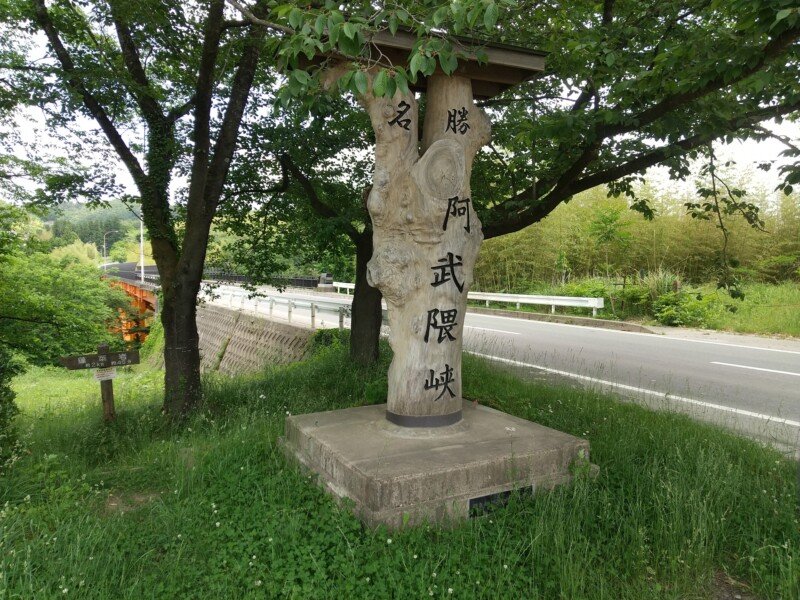
It is a gorge lined with strangely shaped rocks carved out by the erosion of the Abukuma River. There is a promenade that can be walked around in about 2 hours, and in addition to walking, it is secretly a popular spot for taking photos. The promenade starts at Kamihorai Bridge, where there is a parking lot. Why not take a leisurely stroll around the area while enjoying the natural features that the Abukuma River has refined over time, such as Horaiiwa Rock and Ayu Falls?
Information<Abukuma Gorge>
- Name: Abukuma Gorge
- Location: Kanazawa Senba, Matsukawa-cho, Fukushima City, Fukushima Prefecture
Google Map
The constriction that passes the baton to Miyagi Prefecture
The Abukuma River, which has flowed through Fukushima Prefecture, passes the baton to Miyagi Prefecture through the narrow part of the Abukuma Valley the Abukuma Valley Prefectural Natural Park, established in Marumori Town , you can see the magnificent scenery of the hills carved out by the Abukuma River. The rich natural environment seems to be a cradle for many plants and animals that have limited habitat, such as rare insects and wild boars.
summary
, we introduced various trivia about the Abukuma River, a first-class river that originates from Fukushima Prefecture and connects to Miyagi Prefecture
The Abukuma River has created a rich landscape and has had a great impact on people's lives. As it flows north and south through Fukushima Prefecture, it shows all kinds of faces. When visiting Fukushima Prefecture, it might be fun to enjoy a journey along the flow of the Abukuma River.



![[Part 1] Japan's first nautical chart "Kamaishi Port Picture of Rikuchukushi" and the development of Kamaishi [Iwate Prefecture] PXL_20240419_035444450 (1)](https://jp.neft.asia/wp-content/uploads/2024/06/PXL_20240419_035444450-1-150x150.jpg)
![Why was the traditional craft "Akabeko" born? Explore the origin and history! [Fukushima Prefecture] Red beko illustration](https://jp.neft.asia/wp-content/uploads/2022/05/2295427-150x150.jpg)
![We pursue our carefully selected "miso" culture! Introducing recommended miso and local dishes [Fukushima Prefecture] miso](https://jp.neft.asia/wp-content/uploads/2024/08/24466227_m-150x150.jpg)
![[Iitate Village, Fukushima Prefecture] The most beautiful village blessed with nature “Maina Village Iitate” IMG_4417](https://jp.neft.asia/wp-content/uploads/2023/07/IMG_4417-150x150.jpg)
![A report on the experience of "Whiskey Collection Koriyama," Tohoku's first whiskey event! [Fukushima Prefecture] Whiskey Collection Koriyama](https://jp.neft.asia/wp-content/uploads/2024/10/IMG_0751-EDIT-150x150.jpg)
![The delicacy "Anko" is a delicious winter taste on the beach! [Fukushima Prefecture] Monkfish](https://jp.neft.asia/wp-content/uploads/2022/02/2054097_m-150x150.jpg)
![A tour of the 33 remaining Kannon in Minami Aizu. "Thirty-three Kannon" certified as a Japanese Heritage Site [Fukushima Prefecture] 11_MG_9631](https://jp.neft.asia/wp-content/uploads/2022/11/11_MG_9631-150x150.jpg)
!["Negaseki" is one of the three ancient Oshu sekies that surpasses Minamoto Yoshitsune and Matsuo Basho [Tsuruoka City, Yamagata Prefecture] 3809167_m](https://jp.neft.asia/wp-content/uploads/2023/02/3809167_m-150x150.jpg)

